At a recent press screening, several of my fellow critics and I were lamenting the lack of good movies released so far this year. It’s about time for some titles worth touting.
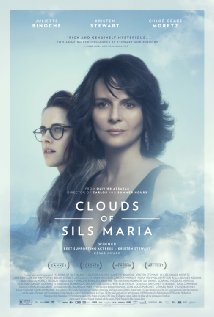 The one standout, most of us agreed, is French writer/director Olivier Assayas’ “Clouds of Sils Maria,” a drama with neo-noir elements (set in Sils Maria, Switzerland) that revolves around a high-profile actress, exuding poise and sophistication, named Maria Enders (Juliette Binoche).
The one standout, most of us agreed, is French writer/director Olivier Assayas’ “Clouds of Sils Maria,” a drama with neo-noir elements (set in Sils Maria, Switzerland) that revolves around a high-profile actress, exuding poise and sophistication, named Maria Enders (Juliette Binoche).
Maria’s enviable career comes full circle when she is talked into making the ultimate encore: She will return to the play that spurred her success 20 years before, though this time she will star as the older women whose life is falling apart. Cast as the luscious ingénue in this rendition is a Hollywood bad girl struggling to steer clear of the tabloids and be taken seriously as an actress (Chloë Grace Moretz). Kristen Stewart co-stars as Maria’s smart, cynical and chicly bespectacled assistant, Valentine.
We are introduced to Maria and Valentine on a train as it solemnly chugs though gorgeous mountain country and the story of these two women, a generation apart, unfolds like a long journey — freeing and claustrophobic, intimate and impersonal, predestined yet random and mysterious. We see the boundaries of their intense relationship stretch, fray and then suddenly, frighteningly vanish.
“Clouds of Sils Maria,” beautifully shot, impeccably cast and confidently directed, has deservedly garnered much praise, especially for the superb performances from leads Binoche and Stewart. (Never having seen “Twilight,” I am now a big Stewart fan).
Suspenseful and sly, wistful and resonant, “Clouds” should not be missed.
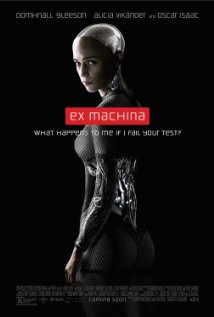 Meanwhile, many reviewers have been impressed with first-time director Alex Garland’s “Ex Machina” (Garland also wrote the script). This sleek sci-fi thriller is crisply smart, coolly shot with a chilly color palette and well acted. In fact, I failed to recognize Oscar Isaac as the mad but muted scientist. Domhnall Gleeson plays a young techie who wins the chance to assess the emotional intelligence of a sexy female robot — a truly heartless femme fatale (Alicia Vikander). It sounds good and looks great but somehow the film overall felt slightly shallow and short on ideas.
Meanwhile, many reviewers have been impressed with first-time director Alex Garland’s “Ex Machina” (Garland also wrote the script). This sleek sci-fi thriller is crisply smart, coolly shot with a chilly color palette and well acted. In fact, I failed to recognize Oscar Isaac as the mad but muted scientist. Domhnall Gleeson plays a young techie who wins the chance to assess the emotional intelligence of a sexy female robot — a truly heartless femme fatale (Alicia Vikander). It sounds good and looks great but somehow the film overall felt slightly shallow and short on ideas.
Similarly, “True Story,” fails to live up to its potential, despite grisly real-life details. James Franco plays Christian Longo, an Oregon man who received the death sentence in 2003 for murdering his family. While on the run in Mexico, Longo impersonated a journalist named Mike Finkel (Jonah Hill). In need of a career boost after being fired by the New York Times for making up one of the interviewees in a magazine story, Finkel agreed to write about Longo and later published a memoir about his experience.
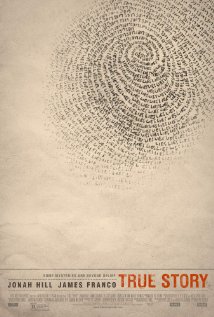 Franco and Hill are compelling as is Felicity Jones as Finkel’s girlfriend. But director and co-writer Rupert Goold loses his way and the storytelling soon becomes murky.
Franco and Hill are compelling as is Felicity Jones as Finkel’s girlfriend. But director and co-writer Rupert Goold loses his way and the storytelling soon becomes murky.
Also, it’s a bit hard to take “True Story” seriously when it depicts the New York Times newsroom as a place where reporters raucously drink beer and play poker after submitting their stories. (Or maybe it’s just hard to take James Franco seriously after the fiasco that was “Child of God”). But it’s been a few weeks since I’ve seen it and nothing much of the movie has stuck with me. Still, there are worse ways to kill two hours.
Also drawing mixed but mostly good reviews is Levan Gabriadze’s debut feature “Unfriended,” a horror flick that takes place entirely on the small screen, ie Skype and Facebook. Shelley Hennig leads a cast of high-school friends who are harassed by a mysterious cyber-stalker. It’s a clever gimmick and the acting’s good, but other than that, “Unfriended” tells a same-old same-old story about the secrets and betrayals of teen friendships and romance.





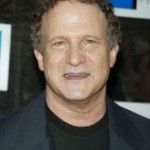
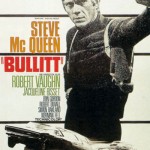





From FNB readers